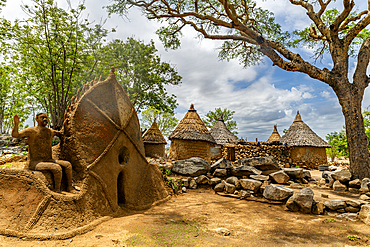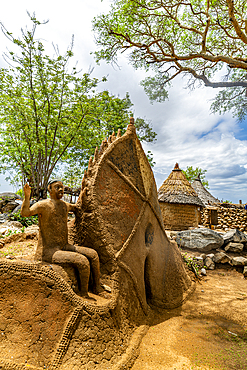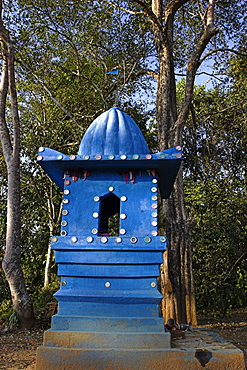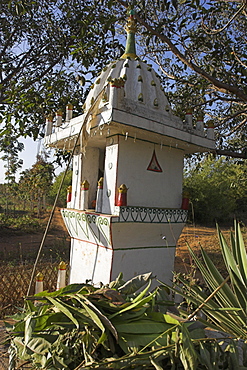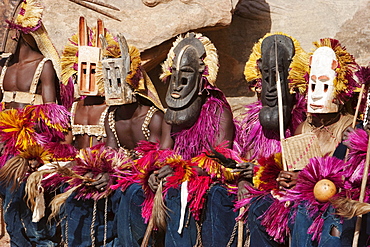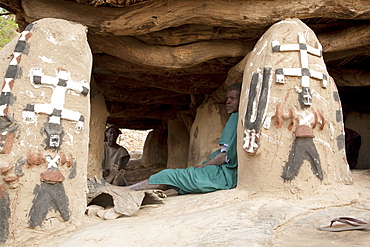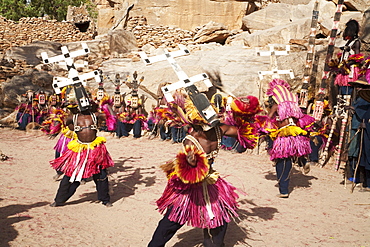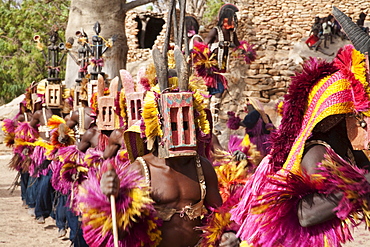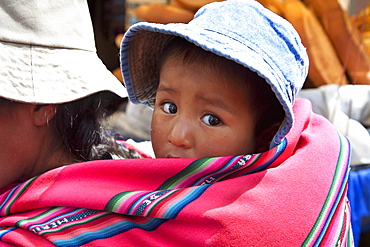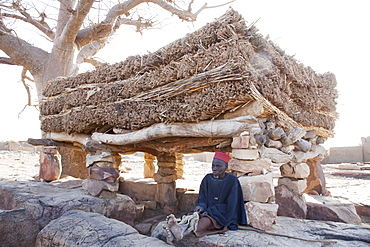Results
11 results found

Statue of an animistic shaman figures in San Agustin Archeological Park, UNESCO World Heritage Site, Colombia, South America

Hen and chicks by intricately woven Animist Donyi Polo shrine, made from bamboo, feathers and eggshells, Ziro, Arunachal Pradesh, India, Asia
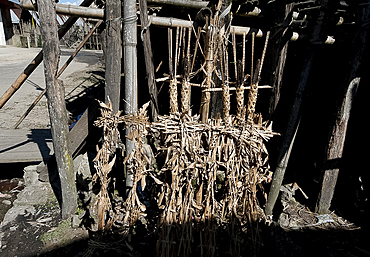
Animist Donyi Polo shrine to the gods, made from bamboo and maize leaves, in Apatani village, Ziro, Arunachal Pradesh, India, Asia
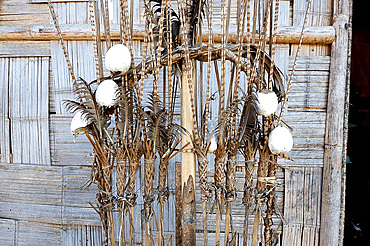
Animist Donyi Polo shrine, made from bamboo, feathers and eggshells, asking for cure for illness in Apatani village house, Ziro, Arunachal Pradesh, India, Asia
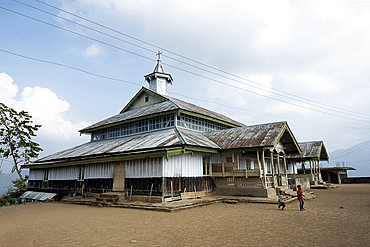
Large, wooden built Baptist church at the top of Naga tribal village, community converted from Animism to Christianity, Nagaland, India, Asia

Hanging coffins of Animistic Applai elders entombed on limestone cliffs, Sagada Town, The Cordillera Mountains, Benguet Province, Luzon, Philippines, Southeast Asia, Asia
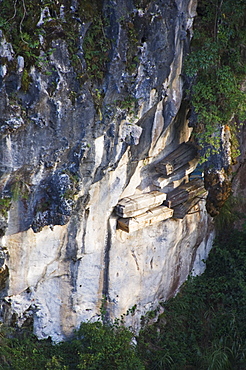
Hanging coffins of Animistic Applai elders entombed on limestone cliffs, Sagada Town, The Cordillera Mountains, Benguet Province, Luzon, Philippines, Southeast Asia, Asia

Men of the ethnic group of the Bamileke with traditional masks, Dance of Death in honor of a deceased person, Badenkop, West Region, Cameroon, Africa
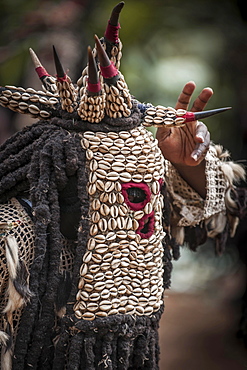
Men of the ethnic group of the Bamileke with traditional masks, Dance of Death in honor of a deceased person, Badenkop, West Region, Cameroon, Africa

Men of the ethnic group of the Bamileke with traditional masks, Dance of Death in honor of a deceased person, Badenkop, West Region, Cameroon, Africa
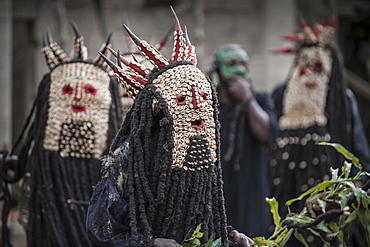
Men of the ethnic group of the Bamileke with traditional masks, Dance of Death in honor of a deceased person, Badenkop, West Region, Cameroon, Africa

Yatiri (Aymara Healer) Performing An Ancient Sacrificial Burning Rite To Bring The Good Will Of The Goddess Pachamama (Mother Earth), Isla Del Sol In Titicaca Lake, La Paz Department, Bolivia

Ceramic figure of el Tio or Supai, a creature with horns, gleaming eyes and a big penis, that in fact is not really satanic. It was introduced by the Spaniards in the 16th Century to the mines of Potosi. According to tradition, el Tio (The Uncle) rules over the mines of Cerro Rico, simultaneously offering protection and destruction. Over 500 chambers with statues to honour him have been constructed in Cerro Rico, so miners can leave offerings of tobacco, liquor and coca leaves to invoke his goodwill and protection., Potosi Department, Bolivia
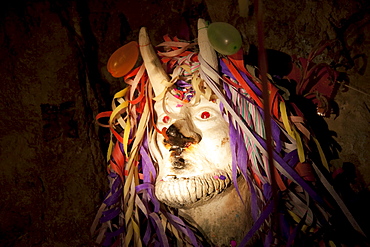
Ceramic figure of el Tio or Supai, a creature with horns, gleaming eyes and a big penis, that in fact is not really satanic. It was introduced by the Spaniards in the 16th Century to the mines of Potosi. According to tradition, el Tio (The Uncle) rules over the mines of Cerro Rico, simultaneously offering protection and destruction. Over 500 chambers with statues to honour him have been constructed in Cerro Rico, so miners can leave offerings of tobacco, liquor and coca leaves to invoke his goodwill and protection., Potosi Department, Bolivia
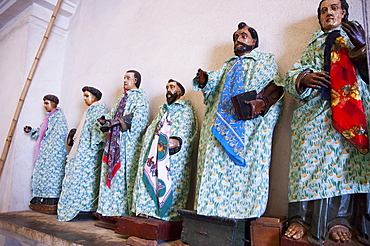
The dressed statues of the Saints in the Santiago Apostol Church are also the guardian-spirits of the Tzutuhil pantheon, a classic example of Maya-Catholic syncretism, Santiago de Atitlun, Sololu, Guatemala

Ceramic figure of el Tio or Supai, a creature with horns, gleaming eyes and a big penis, that in fact is not really satanic. It was introduced by the Spaniards in the 16th Century to the mines of Potosi. According to tradition, el Tio (The Uncle) rules over the mines of Cerro Rico, simultaneously offering protection and destruction. Over 500 chambers with statues to honour him have been constructed in Cerro Rico, so miners can leave offerings of tobacco, liquor and coca leaves to invoke his goodwill and protection., Potosi Department, Bolivia
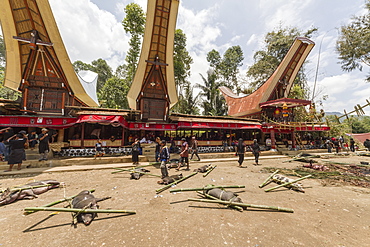
Pigs tied to bamboo sticks at the rante, the ceremonial site where the meat of slaughtered cattle will be distributed to the guests of a Torajan funeral, in Sereale, Toraja Land, South Sulawesi, Indonesia
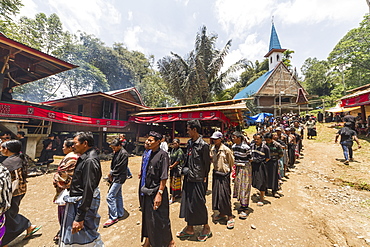
People in a formal funeral procession called Ma’passa Tedong at a rante, the ceremonial site for a Torajan funeral, in Sereale, Toraja Land, South Sulawesi, Indonesia
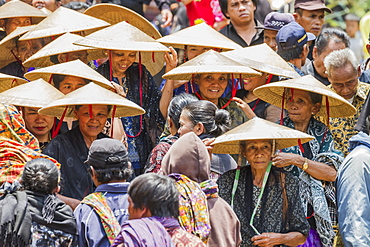
People in a formal funeral procession called Ma’passa Tedong at a rante, the ceremonial site for a Torajan funeral, in Sereale, Toraja Land, South Sulawesi, Indonesia
